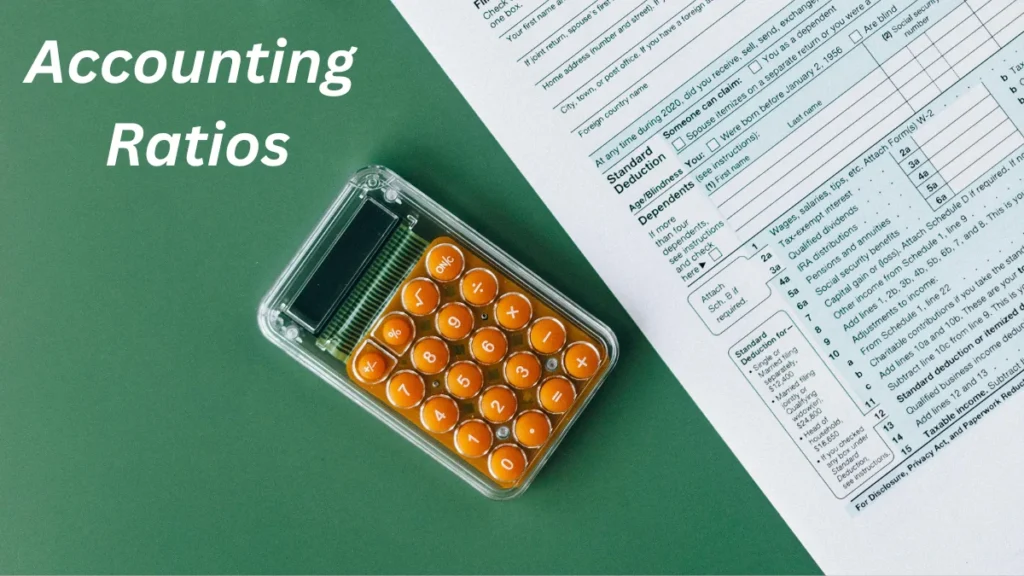
The relationship between two figures expressed in arithmetical terms is called a ratio. Ratios may be classified into the four categories as follows:
- Liquidity Ratios
- Solvency Ratios
- Activity or Turnover Ratios
- Profitability Ratios or Income Ratios
Topics Discussed
Liquidity Ratios
Liquidity is the ability of the firm to meet its current obligations as they fall due. It includes
- Current Ratio = Current Assets/Current Liabilities
- Quick Ratio = Liquid Assets/Current Liabilities
Solvency Ratios
Solvency ratios disclose the firm’s ability to meet the interest costs regularly & long-term indebtedness at maturity.
Solvency ratios include:
- Debt Equity Ratio = Debt/Equity
- Total Assets to Debt Ratio = Total Assets/Debt
- Proprietory Ratio = Equity/Total Assets
- Interest Coverage Ratio = Profit before charging interest & income tax/Fixed Interest Charges
Activity Ratios
These ratios indicate how efficiently the working capital & inventory is being used to obtain revenue from operations. Some important turnover ratios are:
- Inventory Turnover Ratio = Cost of Revenue From Operations/Average Inventory
- Debtors or Receivable Turnover Ratio = Credit Revenue From Operations/Average Trade Receivables
- Creditors or Payable Turnover Ratio = Net Credit Purchases/Average Trade Payables
- Working Capital Turnover Ratio = Revenue From Operations/Working Capital
Formulas:
Cost of goods sold = Opening Inventory + Purchases + Carriage & Wages + Other Direct Charges – Closing Inventory
Average Inventory = Opening Inventory + Closing Inventory / 2
Basic Accounting Terms Class 11 Notes
Profitability Ratios
Profitability ratios measure the various aspects of the profitability of a company. Profitability ratios include:
- Gross Profit Ratio = Gross Profit/ Net Sales * 100
- Operating Ratio = Cost of Revenue from Operations + Operating Expenses – Operating Income/ Net Sales * 100
- Operating Profit Ratio = Operating Profit/ Revenue from Operations * 100
- Net Profit Ratio = Net Profit after Tax / Revenue from Operations * 100
- Return on investment (ROI) = Net Profit before Interest, tax & Dividends / Capital Employed * 100
Formulas:
Operating Profit = Gross Profit – Operating Expenses + Operating Income
Net Profit = Gross Profit – Indirect Expenses & Losses + Other Income – Tax
Comparative and Common Size Statements Notes
Various tools or devices employed for analyzing the financial statements are as follows:
- Comparative Statements
- Common Size Statements
- Trend Analysis
- Accounting Ratios
- Cash Flow Statement
- Funds Flow Statement
- Break-Even Point Analysis
Comparative Statements
When financial statement figures for two or more years are placed side by side to facilitate comparison, these are called ‘Comparative Financial Statements’.
Various types of financial statements are prepared in comparative form for analysis, but in practice, generally, the statements of profit & loss & Balance sheet are prepared in a comparative form.
Format of Comparative Balance Sheet
| Particulars | Note No. | 31.3.23 | 31.3.24 | Absolute Change | Percentage Change |
| EQUITY & Liabilities 1. Shareholder’s Funds a) Share Capital b)Reserves and Surplus 2. Non-Current Liabilities a) Long Term Borrowings b) Long Term Provisions 3. Current Liabilities a) Short Term Borrowings b) Trade Payables c) Short Term Provision d) Other Current Liabilities | |||||
| TOTAL | |||||
| ASSETS 1. Non-Current Assets a) Fixed Assets (i) Tangible Assets (ii) Intangible Assets b) Non-Current Investments c) Long Term Loans & Advance 2. Current Assets a) Current Investments b) Inventories c) Trade Receivables d) Cash & Cash Equivalents | |||||
| TOTAL |
Format of Comparative Statement of Profit & Loss
| Particulars | Note No. | 2023-24 | 2024-25 | Absolute Change | Percentage Change |
| 1. Revenue From Operations 2. Add- Other Incomes 3. Total Revenue 4. Less: (Expenses) (Cost of Material Consumed) (Purchase of Stock in Trade) (Changes in Inventories) (Employee Benefit Expenses) (Depreciation & Amortization Expenses) (Other Expenses) TOTAL Expenses 5. Profit Before Tax (3-4) 6. Less: (Tax) 7. Profit After Tax |
Common Size Statements
Common size statements are those in which individual figures are converted into percentages to some common base.
Format of Common Size Balance Sheet
| Particulars | Note No. | 31.3.23 (in absolute amt.) | 31.3.24 (in absolute amt.) | 31.3.23 (in %) | 31.3.24 (in %) |
| EQUITY & LIABILITIES 1. Shareholder’s Funds a) Share Capital b) Reserve & Surplus 2. Non-Current Liabilities a) Long Term Borrowings b) Long Term Provisions 3. Current Liabilities a) Short Term Borrowings b) Trade Payables c) Other Current Liabilities d) Short Term Provisions | |||||
| TOTAL | |||||
| ASSETS 1. Non-Current Assets a) Fixed Assets (i) Tangible Assets (ii) Intangible Assets b) Non-Current Investments c) Long Term Loans & Advances 2. Current Assets a) Current Investment b) Inventories c) Trade Receivables d) Cash & Cash Equivalents e) Short Term Loans & Advances f) Other Current Assets | |||||
| TOTAL |
Format of Common Size Statement of Profit & Loss
| Particulars | Note No. | 2023-24 (absolute Rs.) | 2024-25 (absolute Rs.) | 2023-24 (in %) | 2024-25 (in %) |
| 1. Revenue From Operations 2. Add: Other Incomes 3. Total Revenue (1+2) 4. Less: (Expenses) (Cost of Materials Consumed) (Purchase of Stock in Trade) (Changes in Inventories) (Employee Benefit Expenses) (Finance Cost) (Other Expenses) Total Expenses 5. Profit Before Tax (3-4) 6. Less: (Tax) 7. Profit After Tax (5-6) |
This was all about Accounting Ratios Class 12 All Formulas. If you have any doubts, you can either join my telegram channel or ask your doubts in the comments section.
[…] Accounting Ratios All Formulas Class 12 […]